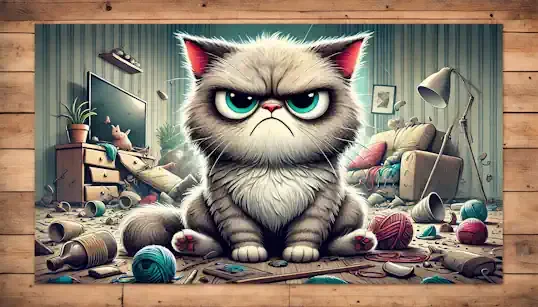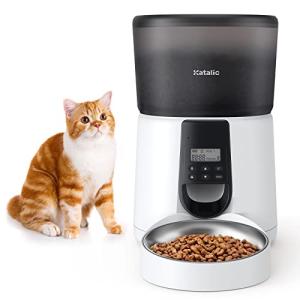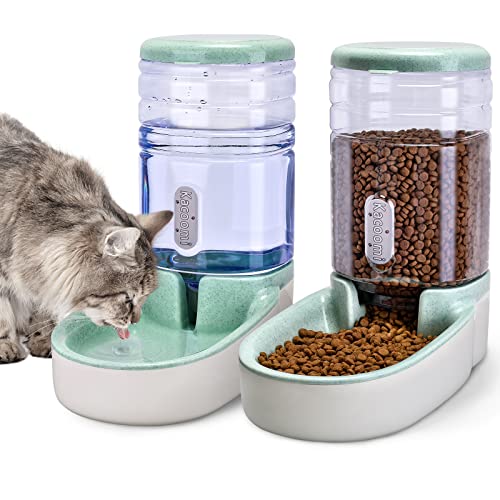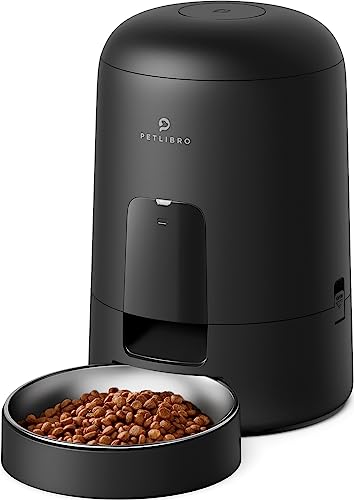That look. You know the one. It’s the feline Mona Lisa of displeasure, the perpetually downturned mouth, the eyes that seem to say, “I tolerate your existence, barely.” We’re talking, of course, about the grumpy cat. That iconic frown, often paired with a thousand-yard stare that could curdle milk, has become a global phenomenon. From internet memes that have launched a thousand ships (or at least a million shares), to actual celebrity status, grumpy cats have clawed their way into the cultural zeitgeist and nestled right into our hearts, ironically, with an expression that suggests they’d rather be anywhere else.
But peel back the layers of internet fame, look beyond the meme-ification of feline fury, and you’ll find something truly fascinating: the real grumpy cat. These aren’t just props for online amusement; they are individuals, each with their own unique personalities, quirks, and yes, that distinctive, almost comically displeased demeanor. And here’s the secret that many grumpy cat aficionados already know: there’s a certain undeniable charm to the grump. We’re not talking about aggression or true unhappiness, but a specific attitude, a carefully cultivated air of disdain that, in a feline package, is often irresistibly endearing. In a world often obsessed with saccharine sweetness and relentless positivity, there’s something refreshingly honest, even majestic, about a cat who seems to wear their inner curmudgeon on their furry sleeve. They’re the rebels of the cat world, the ones who didn’t get the memo about being perpetually cute and cuddly, and honestly? We wouldn’t have them any other way. So, let’s delve into the wonderful, often hilarious, world of grumpy cats. We’ll explore what truly makes a cat “grumpy,” why we humans are so utterly captivated by their perpetually put-out expressions, how to decode their unique communication style, and, most importantly, how to live in harmonious, if slightly side-eyed, co-existence with these real kings and queens of attitude.
First things first: what is a grumpy cat, really? It's more than just a frown, though that iconic visage is undeniably a key component. Think about the physical attributes. For some breeds, a naturally downturned mouth or a certain facial structure can contribute to that perpetually displeased look, even when the cat is perfectly content. Consider the Persian, with their pushed-in faces, or the British Shorthair, with their somewhat perpetually solemn expressions – these breeds, while not inherently grumpy in temperament, can certainly rock the grumpy aesthetic. But true “grumpiness” goes far beyond mere looks. It’s a behavioral package, a collection of personality traits that, when combined, paint a picture of feline…well, grumpiness. Beyond the face, behavioral grumpiness unfolds in a variety of ways. Aloofness and independence are hallmarks. These aren’t the cats who will greet you at the door with enthusiastic head-bonks and legs. Grumpy cats are more…reserved. They are perfectly content in their own company, thank you very much, and while they may tolerate your presence, they certainly don’t require it for their happiness. Affection? Yes, it’s possible, but it is definitely on their terms. Grumpy cats are masters of selective affection. They’ll bestow their precious cuddles and purrs sparingly, and usually only upon a chosen few, and only when they deem it appropriate. You will not be able to demand affection from a grumpy cat. You must earn it, and even then, it might feel more like a royal decree than a warm embrace.
Even when they are content, there’s often a distinct air of…displeasure. The resting grumpy face is their default setting. They can be lounging in a sunbeam, purring like a tiny motor, and still manage to look like they’re judging your life choices with intense disapproval. Vocalizations, when they occur, often lean towards the grumbly end of the spectrum. While not necessarily aggressive, grumpy cats are more prone to expressing mild displeasure with low growls, grumbles, or even just pointed silence. And finally, there’s the body language, the subtle “leave me alone” vibe that grumpy cats expertly project. A flick of the tail, a twitch of an ear, a slow, deliberate blink that says, "I see you, and I am not impressed" – these are the nuanced cues that a grumpy cat uses to establish boundaries and communicate their desire for solitude. It's crucial, however, to distinguish between true grumpiness and aggression. Grumpiness is a personality trait, a demeanor. Aggression is a behavioral issue, often stemming from fear, pain, or anxiety. A grumpy cat may be less tolerant, less overtly affectionate, and more prone to expressing mild displeasure, but they are not inherently aggressive. They aren’t looking to attack or cause harm; they just want to be left in peace to contemplate the general failings of the world and, quite possibly, your questionable taste in furniture. Think of it this way: a grumpy cat might glare at you for daring to exist in their vicinity, but an aggressive cat might actually try to bite you for the same offense. Big difference. And let’s be honest, who hasn't encountered a grumpy cat owner who secretly (or not-so-secretly) finds the whole thing utterly hilarious? Imagine your grumpy cat slowly blinking at you from their perch atop the highest bookshelf, a tiny, furry overlord surveying their domain with an expression that screams, “Are you still here?” Or perhaps the dramatic sigh they emit when you dare to offer them a cuddle, a sound that implies you've just asked them to solve world hunger. These are the moments of grumpy cat ownership that, while perhaps technically signs of feline…well, grumpiness, are also undeniably funny and deeply endearing.
But why, in a world saturated with cute kitten videos and images of impossibly fluffy, doe-eyed felines, have grumpy cats become such internet sensations? What is the allure of the feline frown? Part of it, undoubtedly, is the meme-ification of grumpiness. In internet culture, irony and playful cynicism reign supreme, and the grumpy cat persona perfectly embodies this. The contrast between the inherent cuteness of a cat and the exaggerated expression of displeasure is inherently humorous and endlessly meme-able. But beyond the internet trends, there’s a deeper resonance to the appeal of the grumpy cat. Perhaps it's relatability. Let’s face it, we all have an “inner grump” lurking within us. We all have days when we feel less than thrilled with the world, when a perpetual frown seems like the most accurate representation of our internal state. Grumpy cats, in their unapologetically displeased demeanor, become a furry, four-legged reflection of those moments, allowing us to laugh at ourselves and our own occasional grumpiness through the lens of feline attitude. There’s also something undeniably appealing about a personality that stands out from the “cuddle-crowd.” In a world of cats often portrayed as relentlessly sweet and cuddly, the grumpy cat offers a refreshing change of pace. They possess a distinct individuality, a refusal to conform to the stereotype of the perpetually purring, endlessly affectionate feline. This uniqueness is intriguing and captivating, a subtle rebellion against the expected feline norm.
And let’s not underestimate the challenge – and the reward – of earning a grumpy cat’s affection. Unlike cats who readily dole out cuddles to anyone who offers a scratch, a grumpy cat’s affection is a precious commodity, given sparingly and only to those who have truly earned their respect. This “high bar” for affection, ironically, makes any purr, head-bonk, or rare cuddle feel all the more special and deeply rewarding. You know you’ve truly been accepted into their inner circle when a grumpy cat deigns to grace you with a moment of feline tenderness. There’s also an element of mystery and intrigue that surrounds the perpetually grumpy expression. What are they really thinking behind that frown? The perpetually put-out face invites endless humorous interpretations of their inner thoughts, sparking our imaginations and fueling countless witty captions and meme creations. Ultimately, the allure of the grumpy cat likely stems from a celebration of individuality and diversity within the feline world. They remind us that cats are not monolithic creatures of sweetness and fluff; they are complex individuals with a wide range of personalities, from the overtly affectionate to the delightfully, distinctively, and wonderfully grumpy.
But what shapes a grumpy cat? Is it nature, nurture, or just… well, cat? Like most personality traits, the reality is likely a complex interplay of factors. Breed predispositions might play a subtle role. While no breed is inherently “grumpy,” certain breeds, as mentioned earlier, might have facial structures that contribute to a more downturned expression. And anecdotally, some breeds, like Persians or British Shorthairs, are sometimes described as having a slightly more reserved or independent temperament, which might be interpreted as a form of feline grumpiness. However, it's crucial to avoid broad generalizations – not every Persian is a grumpy gus, and personality is far more nuanced than breed stereotypes. Genetics undoubtedly play a role in shaping individual personality. Just like humans, cats are born with inherent temperamental predispositions. Some kittens are simply born with a more reserved, cautious, or less overtly expressive demeanor than others, and this inherent temperament can manifest as what we perceive as “grumpiness.” Early experiences and socialization, or a lack thereof, during kittenhood can also significantly shape a cat’s personality. Kittens who have limited positive human interaction during their critical socialization period may develop into cats who are more cautious, less trusting, and potentially more prone to being perceived as “grumpy” due to their reserved nature.
It’s also possible that owners can inadvertently reinforce “grumpy” behaviors, though this is a subtle point and should be approached with gentle self-reflection, not blame. For instance, if an owner interprets a cat’s aloofness as inherently cute or desirable, they might inadvertently give that cat extra space and less direct interaction, further reinforcing their independent and potentially “grumpy” tendencies. However, and this is critically important, before you start attributing your cat’s grumpiness to breed, genetics, or personality, always, always rule out underlying medical conditions first. A sudden change in demeanor, increased irritability, or a cat who suddenly seems more withdrawn or “grumpy” than usual can be a significant red flag indicating underlying pain or illness. Arthritis, dental pain, hyperthyroidism, and a host of other medical conditions can manifest as irritability, decreased tolerance for handling, and a general “grumpy” demeanor. Before assuming your cat is simply channeling their inner curmudgeon, a thorough veterinary check-up is essential to rule out any medical causes for their change in behavior. Once health issues are ruled out, and you've considered breed tendencies, genetics, and early experiences, it’s often simply a matter of individual feline personality. Some cats are just naturally more serious, reserved, less overtly affectionate, or…yes, grumpy-looking! And that’s perfectly, wonderfully, cat-tastically okay. It’s part of the beautiful tapestry of feline diversity, and embracing your cat’s unique personality, even if it comes with a perpetual frown, is a core part of the joy of cat ownership.
Living with a grumpy cat is about learning their unique “love language” – and it often involves a lot of…respectful distance. Respecting their boundaries is paramount. Grumpy cats show affection differently, and often require more personal space and independence than their more overtly cuddly counterparts. Understanding this is key to building a harmonious relationship. Think of it as learning to speak “Grumpy Cat.” This means becoming fluent in their subtle cues, learning to read their body language dictionary. A tail twitch might be a sign of mild irritation, while a full tail swish could be a clear “back away slowly” signal. Ear position is crucial; while flattened ears often indicate anger or fear in any cat, in a grumpy cat, ears that are simply not enthusiastically forward might be their version of “meh.” Vocalization variations are also important. Learn to differentiate between a grumpy grumble (mild displeasure) and a true hiss or growl (genuine anger or fear). And remember, even grumpy cats show affection, often in subtle ways. The slow blink, that soft, languid closing and opening of their eyes, is a universal feline sign of contentment and trust, even in the grumpiest of cats.
Creating a grump-approved environment is essential for their happiness. Plenty of space and retreats are non-negotiable. Ensure your grumpy cat has access to quiet, secluded areas where they can retreat and be alone when they desire solitude. A predictable routine is often deeply appreciated by grumpy cats. They thrive on stability and consistency, so maintaining a regular feeding schedule, playtime (on their terms!), and quiet time can help reduce stress and anxiety. A lower-stress household is generally beneficial for all cats, but particularly for more sensitive or reserved felines. Minimize loud noises, sudden changes in the environment, and chaotic activity levels. Enrichment is still important, even for grumpy cats, but it needs to be offered on their terms. Provide toys and activities, but let them initiate interaction and control the pace of play. Gentle playtime is the key. Adapt playtime sessions to be shorter, less boisterous, and focused on activities they can enjoy without feeling overwhelmed. Independent play options, like puzzle feeders or toys they can bat around on their own, are often appreciated. Building trust and a bond with a grumpy cat requires immense patience and consistency. Earning their trust is a slow and steady process, but the rewards are often deeply meaningful. And finally, perhaps most importantly, learn to recognize the “enough is enough” signals. Grumpy cats are often very clear when they’ve had enough interaction, petting, or attention. Learn to back off and give them space when they signal they need alone time to avoid escalating to stress or negative interactions.
Let’s dispel a myth right now: the myth of the “mean” grumpy cat. It’s a humorous exaggeration, often fueled by internet memes, but it’s important to separate fact from funny fiction. Grumpy cats are not inherently unloving or unhappy. They simply express affection and contentment in a different way, a quieter, more reserved way, that doesn’t always fit the stereotypical image of the purring, cuddling feline. For some cats, that “grumpy” exterior, that air of disdain, can actually be a protective shell, a way of feeling safe and in control of their interactions with the world. They might not be overtly demonstrative, but that doesn't mean they don’t form deep bonds with their chosen humans. The humor in grumpy cat memes often relies on exaggeration, amplifying the frown and projecting comically cynical inner thoughts onto these felines for comedic effect. But in reality, grumpy cats are far more nuanced than their internet personas. The deep bond you can build with a grumpy cat is just as meaningful, just as rewarding, as the bond with a more overtly affectionate feline companion. It's simply a different kind of bond, one built on mutual respect, quiet companionship, and the unique understanding that blossoms between two souls, even if one of them perpetually looks like they’re plotting world domination while simultaneously judging your choice of socks. So, let’s appreciate the quiet majesty of the grump. Let’s celebrate their unique dignity, their subtle charm, and their wonderfully expressive, if perpetually displeased, faces.
Long live the grumps! Let’s raise a metaphorical (or perhaps a literal, if your grumpy cat allows it) glass of catnip-infused water to these magnificent felines, these rulers of resting grumpy face, these kings and queens of attitude. Let’s embrace and appreciate feline diversity in all its forms, from the wildly affectionate to the wonderfully, hilariously grumpy. Because in the feline kingdom, the grumpy cats are undeniably royalty. They possess a regal demeanor, a quiet strength, and an undeniable, if ironically expressed, charm that sets them apart. Let’s encourage understanding, acceptance, and even a healthy dose of amusement for these uniquely expressive cats. So, the next time you encounter a grumpy cat, don't frown back. Smile. You are in the presence of feline royalty, a master of the art of the subtle side-eye, and a true connoisseur of the perfectly executed frown. And in their own quiet, grumpy way, they just might be the most wonderfully, uniquely, and endearingly special cats of all.







